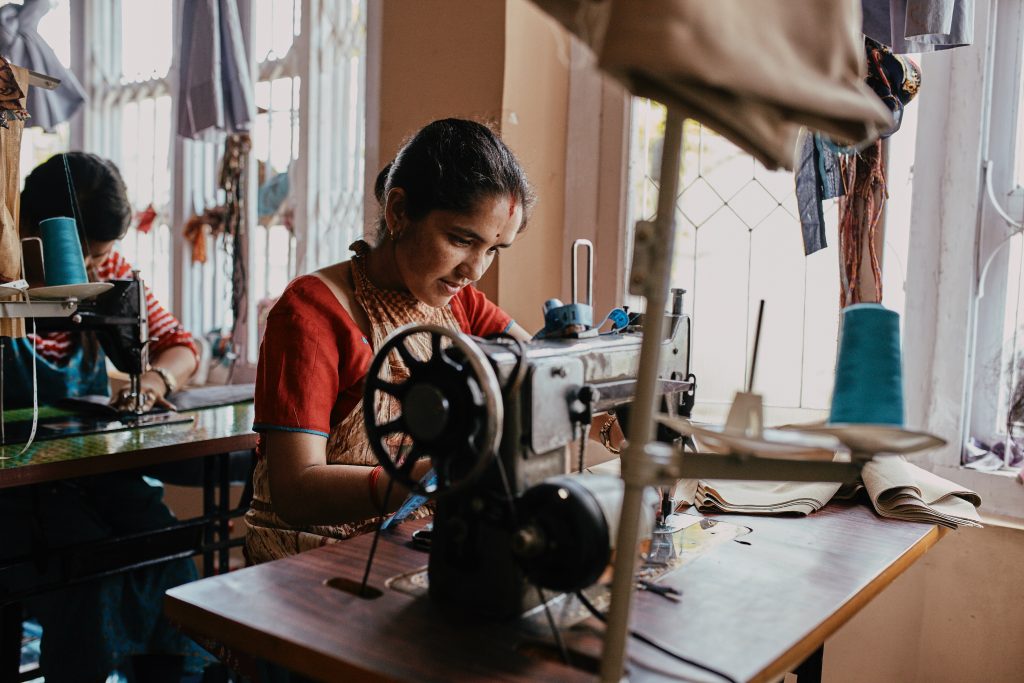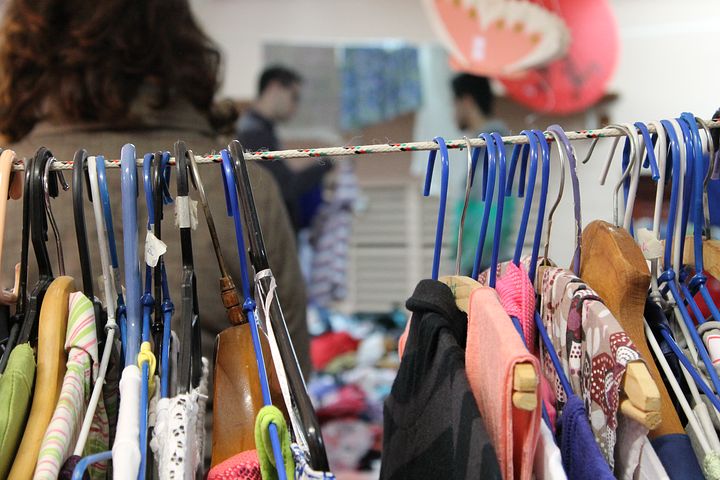
Everyone likes a new piece of clothing. Updating our wardrobes with seasonal, trendy, and inexpensive items is easier than ever. Today’s fashion may be fun and affordable, but its impact on the planet is tremendous. The fashion industry is the second largest polluter of clean water, after agriculture. And that’s not all. Its carbon footprint contributes to 10 percent of global greenhouse gas emissions, and it consumes more energy than the shipping and airline industries combined.
So, are there any alternatives? Read on for an insight on why and how to embrace sustainable, slow fashion and reduce your carbon footprint, without giving up on style.
What Is Fast Fashion?
Fast fashion is precisely what its name says—fast. The key to the majority of today’s clothes manufacturing is speedy and unmindful production. Global brands like H&M, Forever 21, and Gap continually compete in producing inexpensive clothes based on the latest trends. The numbers are stunning. Zara, for instance, releases no less than 20,000 new designs per year. In fact, its two-week span from designing to selling a garment prompted The New York Times to coin the term “fast fashion” in the 1990s. What’s more, the demand for clothes production is rocketing. We buy 60% more clothing than just 15 years ago, and we are quick to discard whatever goes out of fashion.
The True Cost of Fast Fashion
Fast fashion is, by definition, unsustainable. In order to be able to create inexpensive clothes, brands must compromise on the quality of the materials. They use cheap synthetic textiles, microplastics, and non-sustainable dyes. Polyester, for example, is derived from fossil fuels, which contribute to global warming. In addition, the toxic dyes and microfibers that are released in waterways get easily ingested by ocean life. Fast fashion impacts not only the environment but also garment workers who operate in hazardous conditions and earn only minimal wages.

The fast garment production results in a huge amount of clothes that consumers constantly dispose of, creating more and more waste. More than 15 million tons of used textile waste is generated each year in the US only—this amount has doubled in the past 20 years.
What Is Slow Fashion?
Slow fashion is everything its fast counterpart is not: it embraces an unrushed production pace and increased awareness, valuing fair treatment of people, animals, and the planet. Slow fashion is about quality rather than quantity. Clothes are made only from sustainable, locally sourced materials. Slow-fashion brands typically carry only a few styles per collection, which they release two or three times per year.
The good news is that sustainable slow-fashion is on the rise. Here are just a few among dozens of brands that are fully committed to transparency in their production process:
- Alternative Apparel makes a point of using recycled materials and ensures that workers receive fair pay and safe working conditions.
- Babaà Knitwear is a small Spanish brand that uses only the highest-quality, locally sourced artisan wool and supports the local textile industry.
- People Tree is a pioneer in fair-trade fashion. It guarantees equitable wages and good working conditions.
- Everlane makes every effort to be radically transparent, disclosing the exact cost of producing each piece of clothing.
What Can You Do?
Buy less, choose well, make it last.
Vivienne Westwood
Owning a wardrobe devoid of fast-fashion items means having a clear conscience and quality clothes to enjoy for a long time. Here’s what to think about next time you shop for clothes:
- Buy consciously. Choose brands that make an effort to reduce their carbon footprint. That means buying better-quality pieces that last longer. Use Good on You for ratings of more than 2,000 fashion labels, including details on each brand’s environmental impact.
- Be timeless, not trendy. Build a capsule wardrobe—create a curated selection of a few essential items of clothing that won’t go out of fashion. In her interview with us, the founder of THIRD LAW Kathy Kearns explains how to build a sustainable wardrobe by purchasing thoughtfully and valuing the items you own.
- Thrift. Purchase pre-loved clothing to give it a new life and keep it out of landfills. Check out thredUP, the world’s largest fashion resale marketplace, that aims to inspire consumers to buy secondhand.
- Consume less. Ultimately, the less you buy, the less carbon footprint you’ll leave. As Vivienne Westwood said, “buy less, choose well, make it last.”



